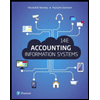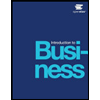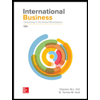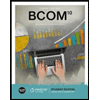solution20report1711347035972_1711347516284 (3)
docx
School
University of Utah *
*We aren’t endorsed by this school
Course
4070
Subject
Business
Date
Apr 3, 2024
Type
docx
Pages
14
Uploaded by PrivatePelican1484
Department of Finance
David Eccles School of Business
University of Utah
Spring 2024
FINAN 4070-Investments
Please note that all guidelines below apply to all students and all projects. Guidelines are
nonnegotiable.
Guidelines for submissions:
-
Projects can be submitted to Canvas from the time the assignment is posted until the deadline.
Project 1 must be submitted , submissions will close. No late projects will be accepted or
graded.
To ensure a project is turned in on time, please submit early, incomplete versions of
projects periodically leading up to the due date. Only the last project submission before the due
date
will
be
graded.
-
Hard copies of projects will not be accepted. Only digital submissions will be graded.
-
You are expected to cite any and all sources used in the completion of this project. Anything
taken directly from the course notes or text should be quoted appropriately. An informal list of
resources at the end of the project write-up is sufficient for a works cited page. -
Turn in both a Microsoft Word document of your project write-up (fill in the blanks) and a
Microsoft Excel spreadsheet with your analysis by uploading them to Canvas. Only Word
documents and Excel spreadsheets will be accepted (no pdfs allowed). You are expected to show
all work in your spreadsheet
. If I cannot find the work in your spreadsheet, you will receive a 0
for the question, regardless of what is presented in your write-up. -
If you have difficulty turning your project in via Canvas, email the project to me immediately. If
you wait until after the deadline to alert me to a problem, your project will be counted as late and
will
not
be
graded.
-
Any projects with blatant plagiarism
—sentences or phrases directly lifted from the internet
without appropriate quotations and citation—
will receive a zero
for the project and all students
involved will be charged with an Honor Code violation. -
Students are expected to conform to basic conventions of standard written English. If your
writing is riddled with errors, misspellings, typos, random capitalizations, and/or font changes to
the point where it becomes distracting to your reader, I reserve the right to deduct up to 10 points
from your final grade. 1
-
Please round all final answers to five decimal places
. Do not round intermediate calculations.
Guidelines for groups:
-
Students are expected to complete this project
individually or in a group of two or three students.
-
You
are
responsible
for
forming
your
own
teams.
-
You may only work with students in the same section of FINAN 4070.
-
Each group/pair of students need only turn in one project—please remember to put the names of
all
student
collaborators
on
the
first
page.
-
Each
student
in
the
group
will
receive
the
same
grade.
-
If you have any questions or need assistance, please see me in office hours or contact me. Please
keep mind that many students will wait until the last minute to seek help. Come to office hours
the
week
before
the
project
is
due
and
beat
the
rush.
-
I will not “pre-grade” assignments. If you have specific questions, I am happy to answer them.
However, I will not look over assignments to see if everything is “right” before the submissions
are due.
-
There should be no discussion of this project between teams. If you have elected to work alone,
the only person with whom you may discuss this project is me. All teams of students are
expected to perform the entire analysis (collecting data, analyzing data, and interpreting the
results) by themselves. Therefore, illicit collaboration on this project includes, but is not limited
to: sharing data between groups, sharing spreadsheets between groups, looking at another team’s
spreadsheet for “inspiration,” sharing write-ups between groups, discussing the answers to short-
answer questions with a person in another group, discussing any part of this project with students
from previous years’ classes, and consulting with or using spreadsheets from students from
previous years’ classes. Any discussion of this project outside teams constitutes a violation of the
Honor Code. Notes on grading:
-
Any re-grade requests or challenges to grading must be submitted in writing within one week
following receiving your grade. 2
Project 1 Write-up Name(s) ________________________________________
Section I – Index creation and calculations
1.
You are creating an index with five stocks: McDonald's Corporation (MCD), Eli Lilly
and Company (LLY), Microsoft Corporation. (MSFT), Entergy Corporation (ETR), and
American Express Company (AXP).
Begin by downloading monthly prices from Yahoo!
Finance for all five stocks from 1/1/2019 to 12/31/2023. Compute the monthly holding
period returns to the securities. Fill in the following table with the first few rows of your
results: (4 Points)
Monthly Adjusted Close Prices
Date
MCD
LLY
MSFT
ETR
AXP
1/1/2019
158.4
110.4
98.98
73.10
95.3
2/1/2019
162.8
116.3
106.18
76.49
100.4
3/1/2019
169.3
120.1
112.26
79.17
101.9
4/1/2019
176.1
108.4
124.32
80.22
109.2
Monthly HPRs
Date
MCD
LLY
MSFT
ETR
AXP
1/1/2019
--
--
--
--
--
2/1/2019
2.83%
5.36%
7.27%
4.64%
4.90%
3/1/2019
3.29%
2.74%
5.27%
2.46%
1.44%
4/1/2019
4.03%
-9.80%
10.73%
1.32%
7.25%
2.
Calculate averages, sample standard deviations, and correlations using your HPRs. Fill
in the following table with your results: (4 Points)
MCD
LLY
MSFT
ETR
AXP
arithmetic average
121
319
248
76
153
geometric average
1.05000
%
2.85700%
2.28490%
0.53300%
1.14600
%
standard deviation 55.99
83.80
63.99
68.82
88.64
Correlations
MCD
LLY
MSFT
ETR
AXP
MCD
1
--
--
--
--
LLY
0.0933
1
--
--
--
3
Your preview ends here
Eager to read complete document? Join bartleby learn and gain access to the full version
- Access to all documents
- Unlimited textbook solutions
- 24/7 expert homework help
MSFT
0.4564
0.3347
1
--
--
ETR
0.5960
-0.0579
0.3249
1
--
AXP
0.5300
-0.006
0.4080
0.3510
1
3.
Create a price-weighted index using your five stocks. What are the arithmetic and
geometric averages and sample standard deviation for your price-weighted index returns?
(4
Points)
arithmetic average = 191.12052
geometric average =0.01803
standard deviation =47.02617
4.
Create an equal-weighted index using your five stocks. What are the arithmetic and
geometric averages and sample standard deviation for your equal-weighted index returns?
(4
Points)
arithmetic average = 183.60391
geometric average = 0.01728
standard deviation =47.10242
5.
Calculate the number of shares you must have in each stock for each month for your
equal-weighted index returns, assuming an initial portfolio value of $1,000,000. How
many shares of each stock should you have for the first three months of the sample? The
last three months of the sample? Fill in the table below: (4 Points)
MCD
LLY
MSFT
ETR
AXP
1/1/2019
1263
1812
2021
2736
2098
2/1/2019
1228
1720
1883
2615
1992
3/1/2019
1182
1665
1782
2526
1964
10/1/2023
771
362
593
2141
1379
11/1/2023
718
339
530
2019
1175
12/1/2023
678
344
533
2000
1071
6.
Create a market-value weighted index. Assuming you have 40 shares of MCD, 45 shares
of LLY, 50 shares of MSFT, 20 shares of ETR, and 35 shares of AXP. What are the
arithmetic and geometric averages and sample standard deviation for your market value-
weighted index returns? (4 Points)
arithmetic average = 204.89281
geometric average = 0.01937
standard deviation = 47.98575
4
7.
For which index is your average return greater, price-weighted or equal-weighted? Why?
(Hint: a complete answer will include a very specific discussion of your numbers. You
may want to support your assertions with calculations.) (4 Points)
The price-weighted index has a higher average return than the equal-weighted index, with
arithmetic averages of 191.12052 and 183.60391 respectively. Whereas, in terms of
geometric averages, the equal- weighted index outperforms the price-weighted index,
with values of 103 and 96.5. it is noticed, the price-weighted index exhibits no much
volatility, as indicated by its standard deviation of 47.02617 compared to 47.10242 for
the equal-weighted index.
This difference in performance can be attributed to the price-weighted index giving more
weight to higher-priced stocks, potentially capturing stronger-performing stocks. In
contrast, the equal-weighted index assigns the same weight to each stock, which might
dilute the impact of high performers. Thus, in this scenario, the price-weighted index
demonstrates better performance in terms of average returns and volatility.
8.
For which index is your average return greater, price-weighted or market-value-
weighted? Why? (Hint: a complete answer will include a very specific discussion of
your numbers. You may want to support your assertions with calculations.) (4 Points)
The average return for the price-weighted index (191.12052) is lower than that of the
market value-weighted index (204.89281). This is because the Market weighted index
considers market capitalization, which may fully capture the price movements of
individual stocks with higher prices.
9.
For which index is your average return greater, equal-weighted or market-value-
weighted? Why? (Hint: a complete answer will include a very specific discussion of
5
your numbers. You may want to support your assertions with calculations.) (4 Points)
Comparing the two indices, we find that the average return for the market value-weighted
index (204.89281) is greater than that of the equal-weighted index (183.60391). So
therefore, the average return for the market value-weighted index is greater than that of
the equal-weighted index. This is primarily because the market value-weighted index
gives higher weights to stocks with higher market capitalization, which experienced
higher returns during the period analyzed. This weighting scheme results in higher
average returns for the market value-weighted index compared to the equal-weighted
index.
Section II – Solving for the optimal risky portfolio
1. Download 5 years (1/1/2019 to 12/31/2023) of monthly data from Yahoo! Finance for
Advanced Micro Devices, Inc. (AMD), Adobe Inc. (ADBE), and XLK, a technology sector
SPDR (ETF). Compute the monthly holding period returns to the securities. Fill in the
following table with the first few rows of your results: (3 Points)
Monthly Adjusted Close Prices
Monthly Holding Period Returns
Date
AMD
ADBE
XLK
AMD
ADBE
XLK
1/1/2019
24
248
63
--
--
--
2/1/2019
24
263
67
-3.61%
5.92%
6.91%
3/1/2019
26
266
70
8.46%
1.52%
4.43%
4/1/2019
28
289
75
8.27%
8.54%
6.71%
2. Compute the arithmetic and geometric averages and the sample standard deviation for each
security’s returns over the five-year period. Fill in the following table: (3 Points)
AMD
ADBE
XLK
Arithmetic average
416.24665
196.91328
212.47333
Geometric average
3.09000
1.50020
1.90870
Sample standard deviation
15.1413381
9.66890
6.63712
3. Compute the Sharpe ratio for each security. Please use the arithmetic average
for your
expected returns. Assume a monthly risk-free rate of 0.37%. Fill in the following table: (3 Points)
AMD
ADBE
XLK
Sharpe Ratio
27.50418%
20.36525%
32.01191%
4. Compute a correlation matrix for your three securities. Fill in the following table:
(3 Points)
AMD
ADBE
XLK
6
Your preview ends here
Eager to read complete document? Join bartleby learn and gain access to the full version
- Access to all documents
- Unlimited textbook solutions
- 24/7 expert homework help
AMD
1
--
--
ADBE
0.581638
1
--
XLK
0.69370
0.82698
1
5. Create a portfolio by varying the proportion of your budget between AMD and ADBE. Compute the
portfolio standard deviation and expected (average) return. Use the arithmetic average for your expected
return calculation. Fill in the following table: (4 Points)
Weight in AMD
Weight in ADBE
Portfolio
standard
deviation
Portfolio
expected
return
0
1
9.66890
196.91328
0.1
0.9
9.66101
218.84662
0.2
0.8
9.80961
240.77996
0.3
0.7
10.10781
262.71329
0.4
0.6
10.54293
284.64663
0.5
0.5
11.09886
306.57997
0.6
0.4
11.75850
328.51330
0.7
0.3
12.50543
350.44664
0.8
0.2
13.32498
372.37997
0.9
0.1
14.20460
394.31331
1
0
15.13381
416.24665
6. Plot your portfolio expected return (y-axis) and standard deviation (x-axis). Make sure to title your
graph and label your axes. The space below is left for your graph. (3 Points)
7
175.00
225.00
275.00
325.00
375.00
425.00
475.00
0.00
2.00
4.00
6.00
8.00
10.00
12.00
14.00
16.00
f(x) = 0.03 x + 3.73
R² = 0.94
Portfolio Risk-Return Profile
Portfolio Expected Return
Std Deviation
7. Use Solver to find the optimal risky portfolio (maximum Sharpe ratio) for your portfolio created with
AMD and ADBE. Assume no short sales are allowed. Fill in the table below: (3 Points)
(Important!!
remember that it is possible to get a result that puts all your money in one security)
Weight in AMD
Weight in ADBE
Portfolio
standard
deviation
Portfolio
expected
return
0.69610
0.30390
12.47%
349.59059
8. Compute the Sharpe ratio for this optimal risky portfolio. Assume a monthly risk-free rate equal to
0.37%. How does this Sharpe ratio compare to the Sharpe ratio of each individual security (computed in
#3)? Why? (4 Points)
(Note: I am looking for an intuitive explanation here
do not say the number is larger or smaller because
a number in a formula is larger or smaller.)
Optimal Sharpe ratio = 28.02339%
The Sharpe ratio measures the return of an investment compared to its risk. A higher Sharpe ratio
suggests better risk-adjusted returns. The optimal risky portfolio has a Sharpe ratio of 28.02339%. This
means it generates 28.02339% excess return for each unit of risk taken. When comparing it to individual
securities, remember that the portfolio is diversified. Diversification spreads risk across different assets,
reducing the impact of any single asset's performance on the overall portfolio. Because of diversification,
the optimal risky portfolio tends to have a higher Sharpe ratio than individual securities. This is because
the portfolio is constructed to balance risk and return more effectively, benefiting from diversification's
risk-reducing effect while still capturing returns. So, even though individual securities might have their
8
own Sharpe ratios, the combined effect of diversification in the optimal risky portfolio generally results in
a higher Sharpe ratio. This is because diversification helps to mitigate risks while maximizing returns,
leading to a more favorable risk-return profile for the portfolio compared to individual securities.
9. Create a portfolio by varying the proportion of your budget between AMD and XLK. Compute the
portfolio standard deviation and expected (average) return. Use the arithmetic average for your expected
return calculation. Fill in the following table: (4 Points)
Weight in AMD
Weight in XLK
Portfolio
standard
deviation
Portfolio
expected
return
0
1
6.63721
212.47333
0.1
0.9
7.10741
232.85066
0.2
0.8
7.72350
253.22799
0.3
0.7
8.45365
273.60533
0.4
0.6
9.27094
293.98266
0.5
0.5
10.15436
314.35999
0.6
0.4
11.08812
334.73732
0.7
0.3
12.06051
355.11464
0.8
0.2
13.06293
375.49198
0.9
0.1
14.08896
395.86932
1
0
15.13381
416.24665
10. Plot your portfolio expected return (y-axis) and standard deviation (x-axis). Make sure to title your
graph and label your axes. The space below is left for your graph. (3 Points)
175.00
225.00
275.00
325.00
375.00
425.00
475.00
0.00
2.00
4.00
6.00
8.00
10.00
12.00
14.00
16.00
f(x) = 0.03 x + 3.73
R² = 0.94
Portfolio Risk-Return Profile AMD vs XLK
Portfolio Expected Return
Std Deviation
9
Your preview ends here
Eager to read complete document? Join bartleby learn and gain access to the full version
- Access to all documents
- Unlimited textbook solutions
- 24/7 expert homework help
11. Use Solver to find the optimal risky portfolio (maximum Sharpe ratio) for your portfolio created with
AMD and XLK. Assume no short sales are allowed. Fill in the table below: (
3 Points)
(Important!!
remember that it is possible to get a result that puts all your money in one security)
Weight in AMD
Weight in XLK
Portfolio
standard
deviation
Portfolio
expected
return
0.37541
0.62459
9.10548
288.97172
12. Compute the Sharpe ratio for this optimal risky portfolio (made of AMD and XLK). Assume a
monthly risk-free rate equal to 0.37%. Fill in the table below. (1 Points)
Sharpe Ratio
31.73561%
13. Create a portfolio by varying the proportion of your budget between ADBE and XLK. Compute the
portfolio standard deviation and expected (average) return. Use the arithmetic average for your expected
return calculation. Fill in the following table: (
4 Points)
Weight in ADBE
Weight in XLK
Portfolio
standard
deviation
Portfolio
expected
return
0
1
6.63721
212.47333
0.1
0.9
6.79487
210.91733
0.2
0.8
6.99399
209.36132
0.3
0.7
7.23115
207.80532
0.4
0.6
7.50274
206.24931
0.5
0.5
7.80517
204.69331
0.6
0.4
8.13499
203.13730
0.7
0.3
8.48903
201.58130
0.8
0.2
8.86437
200.02529
0.9
0.1
9.25842
198.46929
1
0
9.66890
196.91328
14. Plot your portfolio expected return (y-axis) and standard deviation (x-axis). Make sure to title your
graph and label your axes. The space below is left for your graph. (3 Points)
10
195.00
200.00
205.00
210.00
215.00
0.00
2.00
4.00
6.00
8.00
10.00
12.00
f(x) = − 0.2 x + 48.33
R² = 0.98
Portfolio Risk-Return Profile ADBE vs XLK
Portfolio Expected Return
Std Deviation
15. Use Solver to find the optimal risky portfolio (maximum Sharpe ratio) for your portfolio created with
ADBE and XLK. Assume no short sales are allowed. Fill in the table below: (
3 Points)
(Important!!
remember that it is possible to get a result that puts all your money in one security)
Weight in ADBE
Weight in XLK
Portfolio
standard
deviation
Portfolio
expected
return
-0.38195
1.38195
6.46093
218.41656
16. Compute the Sharpe ratio for this optimal risky portfolio (made of ADBE and XLK). Assume a
monthly risk-free rate equal to 0.37%. Fill in the table below. (1 Points)
Sharpe Ratio
33.80515%
17. Compare your optimal risky portfolio of AMD and XLK with your optimal risky portfolio of ADBE
and XLK. How much of your portfolio weight do you put into XLK in each portfolio? Why? Which
optimal risky portfolio has a higher Sharpe ratio? Why? (4 Points)
In the AMD and XLK portfolio, XLK carries a weight of 0.62459, while AMD holds the remaining
weight of 0.37541. Conversely, in the ADBE and XLK portfolio, XLK accounts for a weight of 1.38195,
with practically negligible allocation to ADBE due to its negative weight.
The Sharpe ratio for the ADBE and XLK portfolio is 33.80515%, indicating a higher risk-adjusted return
compared to the 31.71968% Sharpe ratio of the AMD and XLK portfolio. This suggests that the ADBE
and XLK portfolio offers superior performance in terms of risk-adjusted returns, likely attributed to a
more favorable combination of risk and return characteristics within that portfolio. Factors contributing to
this discrepancy could include historical performance, volatility, and the correlation between the assets
(ADBE, XLK) within each portfolio.
11
18. Based on your analysis, select the optimal risky portfolio in which you should invest. Assume an
absolute risk aversion (
A)
of 6. How much of your investment do you put in the risky portfolio?
How much of your investment do you put in the riskless asset (monthly average return =
0.37%)? What is your final (complete) portfolio expected return, risk, and Sharpe ratio? (4 Points)
y = 0.80385
expected return (complete portfolio) = 212.47333
risk (complete portfolio) = 6.63721
Sharpe (complete portfolio) = 32.0119
Part III – Using an index to build an optimal risky portfolio
1.
You want to create one more optimal risky portfolio, comprising AMD and your value-weighted
index (from part I question 6). You have already calculated the averages and standard deviations
for the returns for AMD and the value-weighted index. You should only need one more number
for this calculation: correlation. Find the correlation between AMD and your value-weighted
index.
(1
Points)
correlation = 0.37904
2.
Use Solver to find the optimal risky portfolio (maximum Sharpe ratio) for your portfolio created
with AMD and your index. Assume no short sales are allowed and
a monthly risk-free rate of
0.37%. Fill in the table below: (
3 Points)
(Important!!
remember that it is possible to get a result that puts all your money in one security)
Weight in AMD
Weight in index
Portfolio
standard
deviation
Portfolio
expected
return
0.10009
0.89991
5.08926
226.04636
3.
Compare your Sharpe ratio here with the Sharpe ratio obtained when you found the optimal risky
portfolio for AMD and XLK. XLK is an ETF comprising 66 stocks. Your index only has five
stocks. Why is your Sharpe much higher using your index, relative to the Sharpe obtained in the
analysis using the ETF? (4 Points)
(Note: I am again looking for an intuitive explanation here
do not say the number is larger or
smaller because a number in a formula is larger or smaller.)
The higher Sharpe ratio of the index relative to XLK suggests that it offers a more favorable
trade-off between risk and return. The discrepancy in Sharpe ratios between the portfolio using
your index and the XLK ETF can be attributed to various factors. Firstly, the construction of the
index may prioritize stocks with lower volatility or higher expected returns compared to those
12
Your preview ends here
Eager to read complete document? Join bartleby learn and gain access to the full version
- Access to all documents
- Unlimited textbook solutions
- 24/7 expert homework help
included in the XLK ETF. This selective approach to portfolio construction aims to optimize risk-
adjusted returns, potentially resulting in a higher Sharpe ratio.
Despite containing fewer stocks, the index may offer superior diversification benefits. Careful
selection of stocks within the index can effectively reduce overall portfolio risk without
sacrificing returns. Additionally, if the index is actively managed, portfolio managers can make
strategic decisions to further enhance risk-adjusted returns. This may involve dynamically
adjusting weights based on market conditions, fundamental analysis, or other factors, providing
an edge over passively managed ETFs like the XLK.
Moreover, the index may have exposure to specific factors associated with higher risk-adjusted
returns relative to those present in the XLK ETF. This factor exposure could include industry
sectors or factors like value or growth, which contribute to superior performance.
Lastly, constructing and maintaining the index may be more cost-efficient compared to investing
in the XLK ETF. Lower expenses translate to higher net returns, contributing to a higher Sharpe
ratio for the index portfolio. Overall, these factors collectively contribute to the observed
difference in Sharpe ratios between the two portfolios.
BONUS: for up to 5 points:
Out of all the securities (stocks and ETFs) that are studied in this project, which security has the
highest monthly expected return? What would be the effective annual return for this security
assuming discrete compounding of 12 months? Would you expect to see this kind of return for
this security GOING FORWARD
? What does this tell you about using historical averages as
expected returns? What else can you do to generate another expected return?
Out of all the securities studied in this project, the security with the highest monthly expected
return is XLK, the technology sector SPDR (ETF), with an arithmetic average of 212.47333.
Effective Annual Return= (1+Monthly Expected Return/100)12−1
i= (1+0.021212) ^12−1
= (1+0.0212/12) ^12−1
i=0.021407=0.02141
I=i×100=2.14100
This effective annual return is quite high and may not be sustainable going forward. It is essential
to consider that historical averages do not necessarily reflect future performance accurately. The
past performance of XLK may have been influenced by various market conditions, economic
factors, and specific events that may not repeat in the future.
To generate another expected return, one must conduct thorough fundamental analysis, evaluate
current market conditions, assess industry trends, and consider future growth prospects for XLK
constituents. Additionally, incorporating forward-looking estimates, such as earnings forecasts,
13
economic indicators, and geopolitical factors, can provide a more comprehensive and updated
view of expected returns. Moreover, employing quantitative models or scenario analysis can help
in generating alternative expected returns by simulating various market scenarios and their
potential impact on XLK's performance.
14
Related Documents
Recommended textbooks for you

BUSN 11 Introduction to Business Student Edition
Business
ISBN:9781337407137
Author:Kelly
Publisher:Cengage Learning

Essentials of Business Communication (MindTap Cou...
Business
ISBN:9781337386494
Author:Mary Ellen Guffey, Dana Loewy
Publisher:Cengage Learning

Accounting Information Systems (14th Edition)
Business
ISBN:9780134474021
Author:Marshall B. Romney, Paul J. Steinbart
Publisher:PEARSON


International Business: Competing in the Global M...
Business
ISBN:9781259929441
Author:Charles W. L. Hill Dr, G. Tomas M. Hult
Publisher:McGraw-Hill Education

Recommended textbooks for you
 BUSN 11 Introduction to Business Student EditionBusinessISBN:9781337407137Author:KellyPublisher:Cengage Learning
BUSN 11 Introduction to Business Student EditionBusinessISBN:9781337407137Author:KellyPublisher:Cengage Learning Essentials of Business Communication (MindTap Cou...BusinessISBN:9781337386494Author:Mary Ellen Guffey, Dana LoewyPublisher:Cengage Learning
Essentials of Business Communication (MindTap Cou...BusinessISBN:9781337386494Author:Mary Ellen Guffey, Dana LoewyPublisher:Cengage Learning Accounting Information Systems (14th Edition)BusinessISBN:9780134474021Author:Marshall B. Romney, Paul J. SteinbartPublisher:PEARSON
Accounting Information Systems (14th Edition)BusinessISBN:9780134474021Author:Marshall B. Romney, Paul J. SteinbartPublisher:PEARSON
 International Business: Competing in the Global M...BusinessISBN:9781259929441Author:Charles W. L. Hill Dr, G. Tomas M. HultPublisher:McGraw-Hill Education
International Business: Competing in the Global M...BusinessISBN:9781259929441Author:Charles W. L. Hill Dr, G. Tomas M. HultPublisher:McGraw-Hill Education

BUSN 11 Introduction to Business Student Edition
Business
ISBN:9781337407137
Author:Kelly
Publisher:Cengage Learning

Essentials of Business Communication (MindTap Cou...
Business
ISBN:9781337386494
Author:Mary Ellen Guffey, Dana Loewy
Publisher:Cengage Learning

Accounting Information Systems (14th Edition)
Business
ISBN:9780134474021
Author:Marshall B. Romney, Paul J. Steinbart
Publisher:PEARSON


International Business: Competing in the Global M...
Business
ISBN:9781259929441
Author:Charles W. L. Hill Dr, G. Tomas M. Hult
Publisher:McGraw-Hill Education
